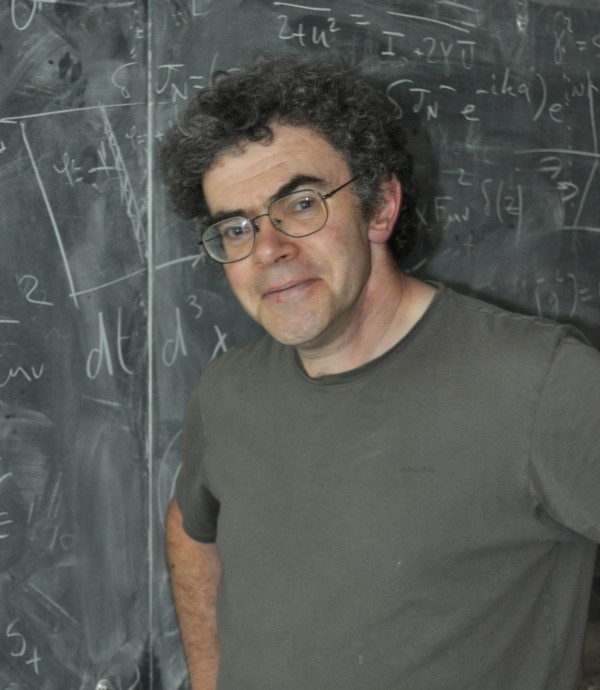MARVEL Distinguished Lecture — Leonid Levitov
The fourth NCCR MARVEL Distinguished Lecture will be given by
Prof. Leonid Levitov (MIT, Cambridge, USA)
"Atomic Collapse in Graphene"
on Tuesday October 13, 2015, 4:15 pm, EPFL room MXF-1.

Abstract — Since the discovery that electrons in graphene behave as massless Dirac fermions, the single-atom-thick material has become a fertile playground for testing exotic predictions of quantum electrodynamics, such as Klein tunneling and the fractional quantum Hall effect. Now add to that list atomic collapse, the spontaneous formation of electrons and positrons in the electrostatic field of a super-heavy atomic nucleus. The atomic collapse was predicted to manifest itself in quasi-stationary states which have complex-valued energies and which decay rapidly. However, the atoms created artificially in laboratory have nuclear charge only up to Z = 118, which falls short of the predicted threshold for collapse. Interest in this problem has been revived with the advent of graphene, where because of a large fine structure constant the collapse is expected for Z of order unity. In this talk we will discuss the symmetry aspects of atomic collapse, in particular the anomalous breaking of scale invariance. We will also describe recent experiments that use scanning tunneling microscopy (STM) to probe atomic collapse near STM-controlled artificial compound nuclei.
About the speaker — Leonid Levitov published over a hundred refereed papers and reviews in the fields of quantum transport, nano-electronics, solid-state quantum computing, cold atoms, quantum noise, growth and pattern formation, which can be found at the home page http://www.mit.edu/~levitov. He pioneered in the theory of quasicrystals, orderly materials with non-crystallographic symmetries discovered in 1985. Leonid co‐authored a theory explaining the structural properties of quasi-crystals by introducing the concept of a structure projected from a high-dimensional periodic structure. In the 90's, he pioneered in the theory of quantum noise. Leonid formulated the counting statistics approach, which evolved into a new tool in the field of quantum transport. In 1993, he developed the concept of coherent current pulses allowing the transmission of electrical signals in a noise‐free fashion. These pulses, observed in 2013 and dubbed 'levitons', have become the basis of electron optics. In the last 10 years, Leonid developed theory of electronic properties of graphene, a newly discovered two‐dimensional electron system.
Low-volume newsletters, targeted to the scientific and industrial communities.
Subscribe to our newsletter